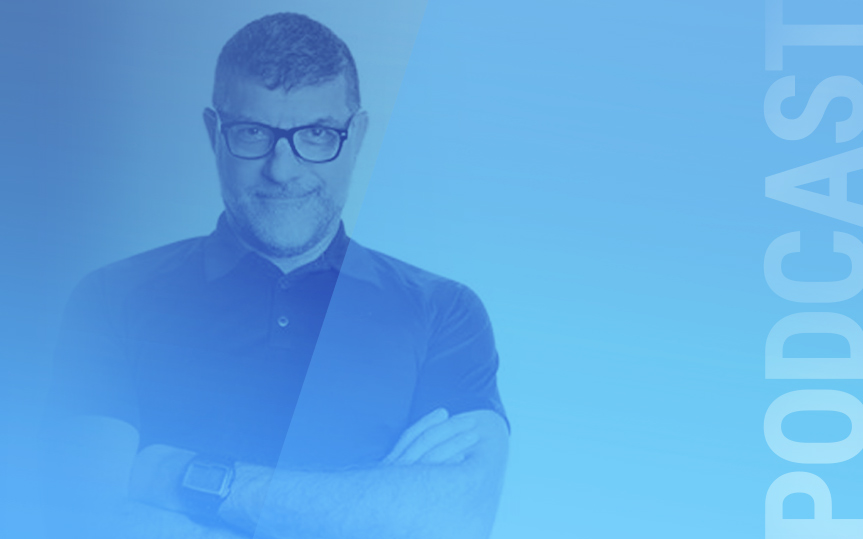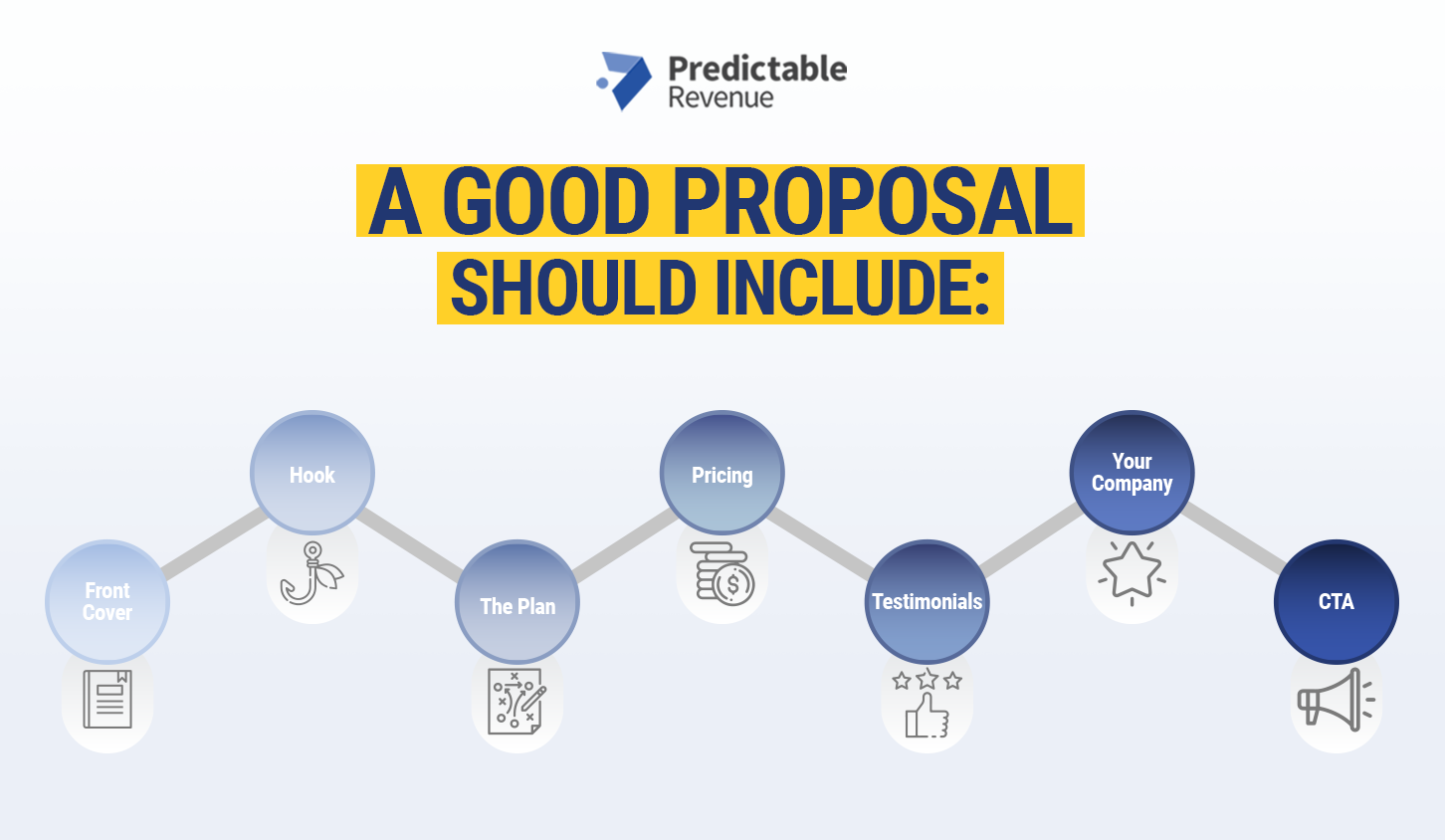How To Write Proposals That Sell

Allan Langer, a recent guest on the Predictable Revenue podcast, is an expert in building proposals that sell. The biggest mistake he sees in proposals (as well as websites, ads, email messaging, etc. but that’s another issue) is companies talking about themselves first. Prospects need to know that you understand the problem they’re having, that you know how to solve it, and how you plan to do so before they care about you. Allan likens it to meeting someone at a networking event and when they ask you what you do, replying: “well, my great grandfather started the business 75 years ago in a green barn…” But you shouldn’t be talking about yourself until the end of the proposal. The only reason a prospect will hire you is because they trust you can solve the problem they have. So, hook them in with what you understand about them and solidify that with your credentials, story, and social proof at the end.
STORY BRAND
A lot of what Allan teaches around proposal writing is based on Donald Miller’s Story Brand. Donald’s concept is simple: “if you confuse, you lose.” The customer has come to you to have a problem solved, and if they don’t see how you’re going to do that in the first 5-8 seconds, they’re gone. You must attack the pain you solve first – not your product, not your features, and not your story. People don’t buy those things, they buy benefits and emotion.
WHAT YOUR PROPOSAL SHOULD LOOK LIKE

Front Cover: Stand out from the crowd.
Hook: “Based on our conversation…”
The Plan: Three, easy to follow steps that take your prospect from now to success.
Pricing: Not a cost, an investment.
Testimonials: Other people like your prospect are very happy working with you.
Your Company: Your story.
CTA: Next steps.
FRONT COVER
Don’t just put your big logo on the front cover of your proposals (though you can keep a small one in the corner). First of all, that’s all about you. Second of all, that’s what everyone does. When you do the same thing as everyone else, you become a commodity. Third, it doesn’t tell anyone what’s to come. Your front cover, in Allan’s opinion, should be a success image. Something that relates to your prospect and their problems but gets then excited to read on.
Don’t make the title Their Company <> Your Company. Put what issue you’re going to be solving right on the cover, front and center.
HOOK
Allan’s headline at the top of every proposal begins with “based on our conversation…” He then dives into a detailed recap of what he and the prospect discussed: “…you told me x about y.” He outlines the issues the prospect is facing, how he’s encountered similar problems in the past either with other clients or in his own experience. He lies out the prospect’s story with one soft punch after another and starts to establish how he could help – but doesn’t speak about his company or his solution yet.
When discussing the prospect’s pains, and throughout the rest of the proposal, make sure not to use any inside or company terminology (i.e. words, terms, acronyms that make sense to your company or to you in your role, but may not be commonplace for your buyer).
THE PLAN
After you’ve shown that you understand your prospect’s problem and that you have the experience to help them, show them a very simple plan. Allan explains that the human brain likes to consume information in threes, so a three-step plan on how you’re going to help them will have the most impact. The three-step plan should take the prospect through choosing how to get started, figuring out the logistics, and enjoying the success at the end. For instance, if you were selling Adobe Photoshop, your plan might go: 1) purchase the right package for you, 2) follow our tutorials, 3) create awesome photos. This might seem overly simplistic but, back to Donald Miller’s old adage: if you confuse, you lose. This way, the customer understands exactly the path to follow to get to the desired result. After outlining the plan simply, you can dive into some more of the specifics that would exist within each step as well.
PRICING
Now that you’ve explained the plan, it’s time to talk about pricing. You don’t want your prospect to view your solution as a cost but as an investment. That’s not a new concept in sales, Allan admits, but what he wants to make sure his prospects take away from this section of the proposal is that the cost of inaction is greater than the cost of action. He defines two paths: one where the prospect continues the way they’ve been going, experiencing the same pains and the same negative impacts on their business. The second involves Allan and his prospect tackling the pains together and reaching a more successful outcome. It can be easy to sound arrogant here. While it certainly is a dose of tough love, Allan softens the blow by congratulating the prospect on identifying their problem as the first step to solving it. This is a great place to have your prospect imagine what Allan calls “the feeling of what it would be like to do business with you.” He does this with a simple sentence that encourages the prospect to think of what their life/business/job would be like if their problem didn’t exist.
It can also be beneficial to offer a prospect three prices to choose from. This changes the decision-making process from “should I buy?” to “which of these should I buy?” In most cases, the most expensive option you have to offer is also the option that would provide the most value to your prospect. As such, you want to design your packages so that the 3rd option (your most valuable option) is a no-brainer. Let’s imagine you’re selling a software subscription. The first package could be a month-to-month subscription priced at $225/month. Your second option could be an annual subscription for $2497.
Your third option could be a two-year contract priced at $2997 – just $500 more than a single-year subscription. When you make your most valuable option attainable and appealing, you not only increase your margins as a business, but you make the customer feel good about what they’re buying. If you have three pricing options and you push the customer to the second, it feels like the average choice. It feels like they couldn’t quite afford your best work so they’re settling for less. But if your customer can justify the most valuable package, they’ll feel great about buying what they see as the best option.
In many cases, especially when dealing with bespoke services engagements which require heavy qualification and discovery on the salesperson’s part, there may be only one good option for the prospect when it comes time to send the proposal. In that case, the salesperson needs to make sure to price condition the prospect before they read the price in the proposal. If the prospect is shocked at the price, you’re going to have a harder time converting them.
TESTIMONIALS & YOUR COMPANY
Now, and ONLY now, have you earned the right to talk about YOU. Leverage testimonials to show your prospect how you’ve helped someone like them at a company like theirs solve a similar problem and how your customers are very happy working with you. Talk about your credentials to reinforce your plan. Share your company’s story (though it’s likely that people won’t read this).
Incorporate images of authority. Don’t just include headshots. If you’re a coach, include an action image of you helping a client or speaking to a group. If images or graphs are relevant to your buyer and their problems, include them as well (but not just for the sake of it).
CTA
Tie it all together by writing “glad we had this conversation. The next steps are x, y, z, and I’ll take it from there.”
TOOLS
There are plenty of tools out there that can help you systematize and scale the way you write and send proposals like PandaDoc and Proposify. Allan recommends you find one that allows you to create templates, change and omit sections within templates, and that takes the customer to a payment page as soon as they’ve signed.
CONCLUSION:
The key to writing proposals that sell is focusing on the customer first and foremost, and that starts with the very first sentence, “based on our conversation…” Customers today are exhausted by salespeople. They’re sick of being on the receiving end of the same, canned conversations and reading the same, templated, feature and product focussed proposals. Restructuring your proposals per Allan’s recommendations will help you stand out from the competition, show your prospects that you understand their pains, and ultimately, help you win more deals.
EDITOR’S NOTE:
More on writing great proposals:
Octiv’s Kelsey Briggs On How To Improve Those Critical Documents
How to nail your proposals with Mimiran’s Reuben Swartz
NO TIME TO READ?
Listen On:
How can you carry on your duties as an entrepreneur to create and develop, if your business is also relying on you to bring in sales?
Considering the relationship, time, and effort a founder/entrepreneur can spend on sales vs. developing their products, building your own SaaS Sales Playbook comes in handy.


